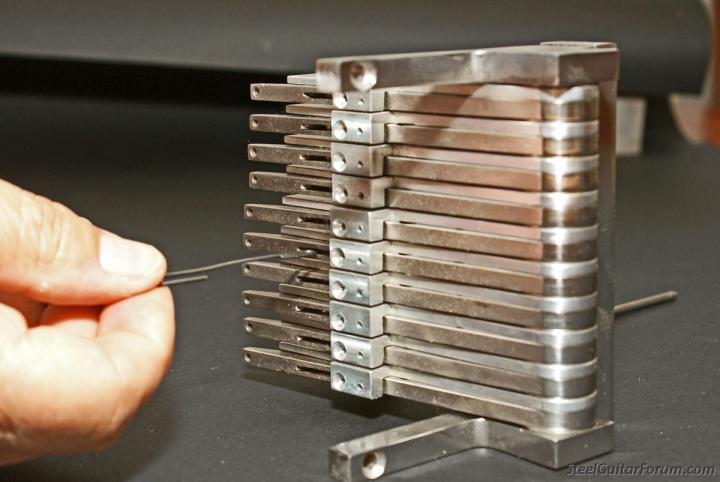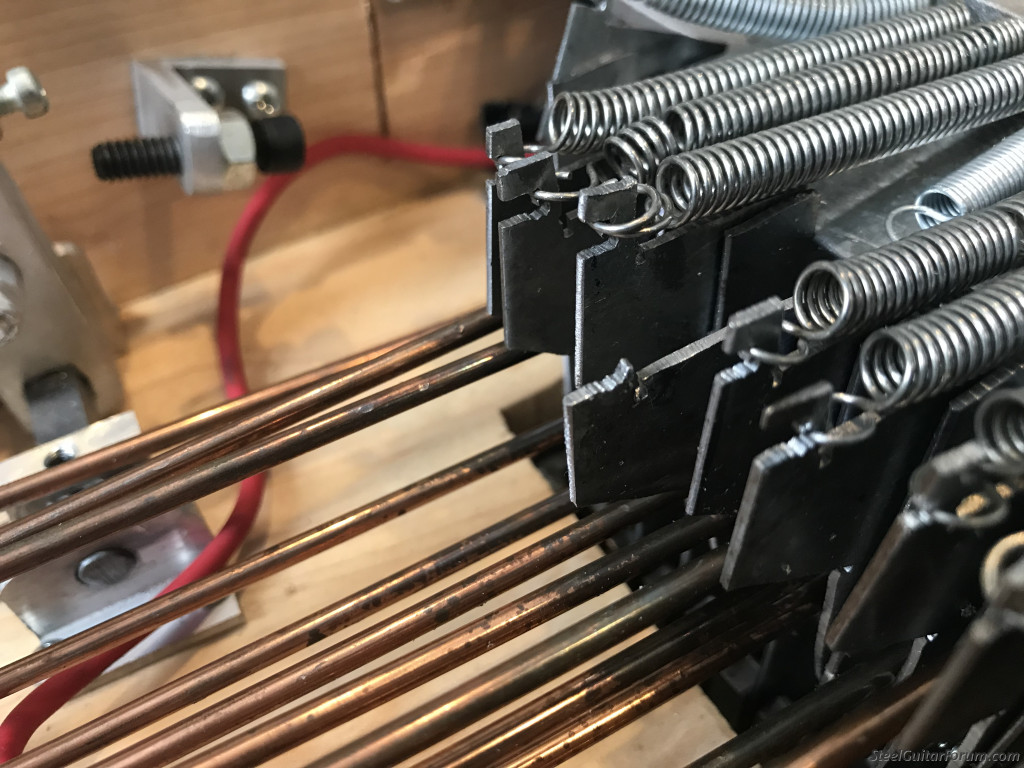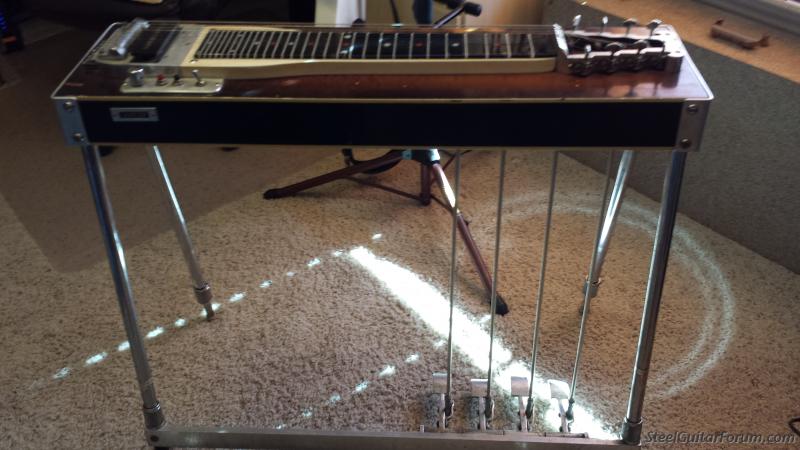The end result is a finger with much less internal friction and undesired movement in the changer and provides a harder surface much more resistant to scratching.
Pedal steel guitar changer finger.
On guitars with modern all pull changers there are 2 basic types of mechanisms.
The changer is the heart of a pedal steel guitar.
Which rotates the bell crank finger which pulls the pull rods which pulls the changer finger.
I tried something similar to that but ended up using two cables to a pedal where there were two pulls involved.
Demonstration of a homemade pedal steel guitar pull finger and a testing jig.
Most steel guitar companies use aluminum for this part.
In this configuration the raise finger goes up and around the bridge pin finger shaft and resides next to the control finger.
Hold it there and tune with the left hand at the keyhead tune the string to the note you want it hit when you raise it.
It contains 1 rivet which connects the raise and lower fingers.
The cables were attached to right and left sides of the pedal.
This movie shows ross shafer making changer finger stops for the new sierra pedal steel guitar.
The pedal rods rotate the cross rods and are stopped by the pedal stops.
Tune the changer for the pedal or knee lever that you are setting up reach under the guitar and push the bridge finger for one of the strings you plan to raise left all the way until it hits the body of the guitar.
The part is then precision ground to 001 total tolerance and polished.
Our stainless steel finger is manufactured by a unique process by which powdered metal is formed under extreme pressure and high heat to create a part much harder than its original starting material.
On the underside of the body you ll see the pedal rods attached to cross rods.
Doing that seemed to lessen the force needed to raise the strings.






















